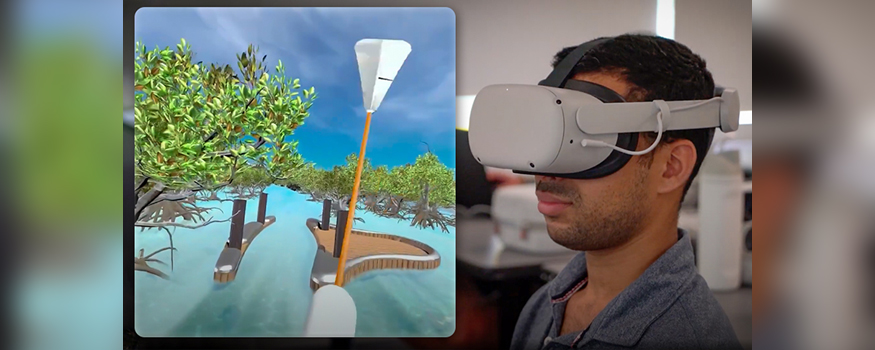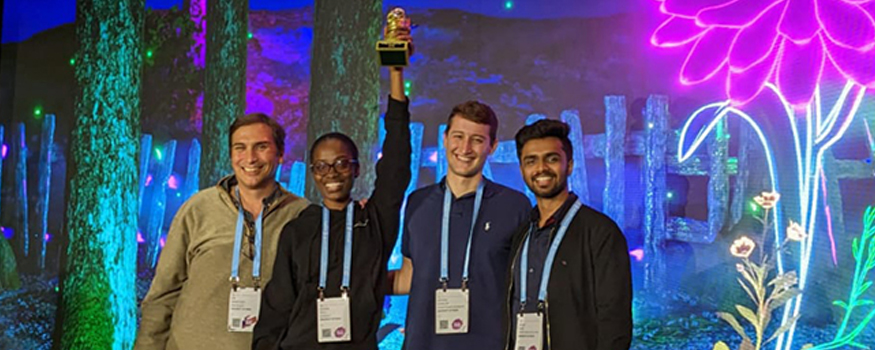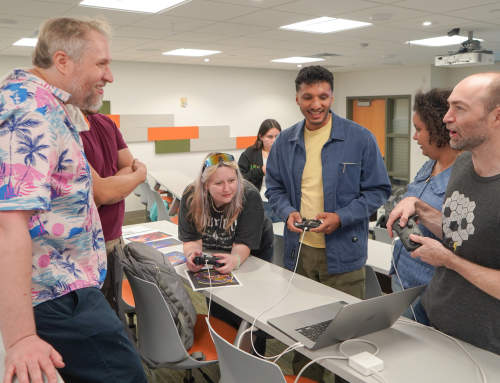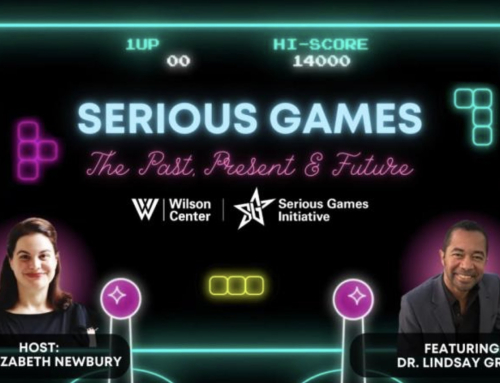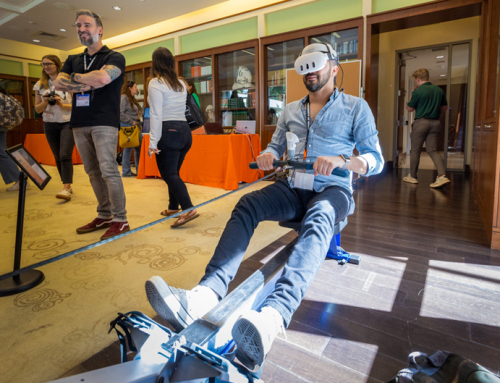By Janette Neuwahl Tannen
Created by an interdisciplinary team at the University of Miami, the Mangrove City app aims to give students an up-close lesson about the importance of ecosystems.
With sea levels rising at increasing rates worldwide, University of Miami interactive media professor, Kim Grinfeder, wondered: could he create a virtual experience that teaches students how they might navigate a coastal city like Miami 100 years from now?About two years ago, he formed a small interdisciplinary group of students and faculty and staff members with expertise in virtual reality, mangrove ecology, coastal management, and architecture. And this summer, they unveiled their immersive application, called Mangrove City.
“It is expected that 243,000 square miles in the U.S. will be impacted by sea level rise in 2100 and several large cities are in that area, including Miami. Building walls isn’t going to be enough; we need to learn how to adapt,” said Grinfeder, who also leads the University’s XR Initiative. “Understanding mangrove ecology and how to leverage this ecosystem to build urban resilience will be critical to our survival.”
The group’s efforts did not go unnoticed. The Mangrove City team recently placed first in the education category at an XR Prize Climate Change Challenge as part of AWE, the Augmented World Expo in California.
Geared toward middle school and high school students, the virtual reality app allows them to paddle through a fictional metropolis and experience firsthand what it might be like to traverse a U.S. coastal hub of the future. It also illustrates the importance of mangroves for protecting our coastlines from erosion and storm surge, inviting users to consider environmental engineering as a future career path. At different stations, students learn about coastal destruction, common types of mangroves, and bird and fish species that thrive in a mangrove ecosystem.
“Often, the most effective learning is experiential, and virtual reality offers a unique opportunity to transport students into mangroves and to consider alternative realities,” Grinfeder said. “I see applications like this as the future of education.”
When he crafted the idea for Mangrove City, Grinfeder already had started working with interactive media faculty member Zevensuy Rodriguez to explore “self-propelled locomotion,” or ways to move oneself forward in virtual reality through a School of Communication research grant. One of the interactions they explored was using a paddleboard to navigate a virtual environment, which worked so well that they decided to co-create Mangrove City. As the project grew, Grinfeder reached out to architecture lecturer Ruth Ron and Rafael Araujo, a senior research associate, lecturer, and mangrove expert at the Rosenstiel School of Marine, Atmospheric, and Earth Science. Both used the opportunity to engage their students. Ron asked hers to design buildings that could withstand rising sea levels, learning from the mangrove’s evolutionary adaptations.
Through the project, Ron said her students gained skills anchored in the reality of designing resilient buildings for Miami, while also learning new software tools to create buildings in virtual reality.
“When they graduate, they won’t just be able to operate as architects in the physical world, but in the virtual world, which is a growing market,” Ron said. “To be a designer of the metaverse is an amazing opportunity for our architecture students.”
Araujo and his students consulted with Grinfeder and Ron on how mangroves help protect coastal ecosystems.
“I liked the experience of working with such a talented team that came from so many disciplines at the University—their enthusiasm was contagious,” said Araujo, who is presenting the experience to mangrove experts from across the world at the sixth international Mangrove Macrobenthos and Management conference (MMM6) in Cartagena, Colombia this week. “But I’m sure this is just the beginning. Once Mangrove City is out in the world, I believe I will find renewed inspiration from the many middle and high school students who will interact with the technology and learn to appreciate this remarkable ecosystem.”
Helping to design and develop the app—which is still undergoing some revisions this summer—are Bryson Rudolph, a software engineer at the University’s Frost Institute for Data Science and Computing, as well as interactive media students Cassandra Swilley and Kumani Riley. Sourav Pande, a master’s degree candidate in music engineering at the Frost School of Music, also is part of the team.
Ashay Dave, a master’s degree candidate in music engineering at the Frost School of Music, is working to fine-tune the audio for Mangrove City this summer so students will be able to hear native birds, mosquitos, water lapping over their paddleboards, and the Metrorail passing by as they paddle through the virtual environment.
Dave said he was new to working in virtual reality before joining the team but loved the creativity so much that he hopes to be an audio programmer for the gaming industry after graduation. “I enjoyed the design process of this project and helping to make the environment come alive, as well as integrating it with the cityscape,” he said.
In addition, K. “Ren” Rende, a School of Communication graduate and current University of Nebraska assistant professor of STEM education, is designing a free downloadable curriculum aligned with the Next Generation Science Standards that will be available with the experience and could be used in classrooms nationwide.
This fall, Grinfeder hopes to test the application with students in Miami-Dade County Public Schools to see whether they could benefit from visiting Mangrove City.
“We want to inspire middle school students to think about future pathways starting today, which includes learning how to coexist with water,” Grinfeder said. “We are also trying to empower teachers with tools like this, so that they can take students on virtual field trips. Although we started with a mangrove ecosystem because it is relevant locally, this could be applied to many other ecosystems.”
This story originally appeared at https://news.miami.edu/stories/2023/07/vr-offers-teens-a-glimpse-into-the-future-of-coastal-cities.html.

